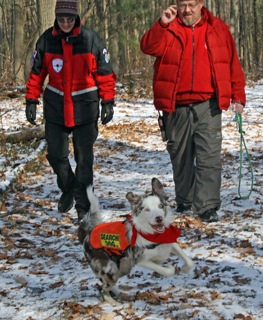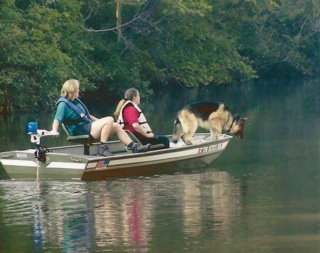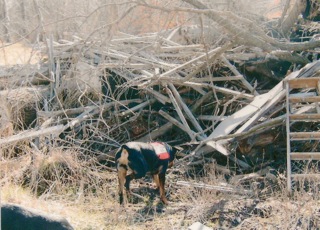|
Training Your Search and Rescue K9
Training a Search and Rescue dog can be a fun yet challenging experience. It normally takes one to two years for a K9 to become operational. Your dog needs to be motivated and have the drive to learn the skills needed for certification in whatever task you want him to perform. For creating a motivating toy
click here
. The Air Scent dog is probably the most frequently encountered SAR dog. Every human releases microscopic scent particles called "rafts" into the air. The dog's sense of smell is about 40 times more sensitive than a human's. The rafts form a scent cone that the dog can follow, and ultimately find the missing person. Did you know an
Avalanche Rescue
dog can find a person buried under 15 feet of snow? Some dogs have a better sense of smell than others, which is why Bloodhounds are used frequently for tracking (or trailing). They can pick up a scent weeks old, even if other breeds can't. Some dogs are trained to search, while others will follow a track of a particular person. There are different training techniques depending on the job you want your dog to do. On a call where a dead body may be the outcome, a
Cadaver
dog may be used. Search and Rescue dogs are find living people. A cadaver or
HRD
(Human Remains Detection) K9 will pick up the scent of decomposing tissue as it rises to the surface of the ground.
If you've ever flown out of an airport, you may have come across a Bomb or Narcotics detector dog. These are becoming more popular with Homeland Security concerns. Some dogs are taught to find drugs like marijuana, cocaine, heroin, and methamphetamines. Bomb dogs can find TNT, C-4, Water Gel, Detonator Cord, Date Sheet, Nitro Dynamite, Sodium Nitrate, Potassium Chlorate., Ammonia Dynamite, just to name a few. One more type of search dog that doesn't get a lot of recognition is the Arson detection dog. Maybe because there are fewer detection dogs trained in arson, and even fewer handlers. These dogs can make or break an investigation if they can confirm the use of an accelerant in a fire. Arson dogs can be a valuable resource, and save time in finding the the arsonist.
Return to "K9 Search and Rescue Home Page"
|



